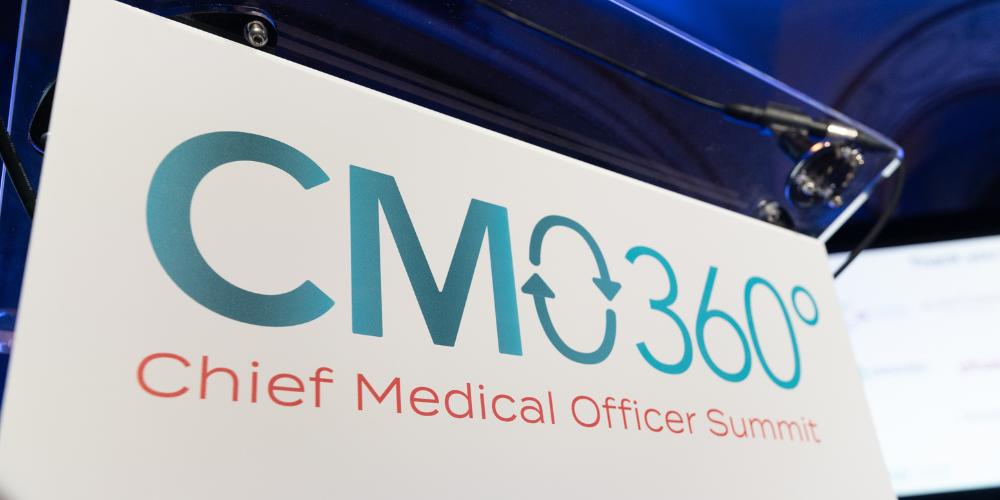
Tell us about your clinical design approach for your psychedelic-derived drug candidate?
From a trial design perspective, we’ve tried to make these trials as familiar to stakeholders – regulators, prescribers, payors – as possible. What’s remarkable here are the qualities of the drug that we’re developing, MM120, a pharmaceutical formulation of LSD; we don’t need to do anything inconsistent with the history of psychiatric clinical trials beyond that.
The main difference is that for any phase two psychedelic trial – apart from a psychiatric medication trial – the entirety of the intervention happens in a single dose on a single day. This session-based delivery becomes a big focus of the design of the trials. We have opted not to provide psychotherapy as a therapeutic intervention alongside the drug intervention to best isolate drug effect rather than see the combined effect of drug and psychotherapy. While others in the field do preparatory psychotherapy and psychotherapy in the room and then do integrative psychotherapy after the drug is given, we do not.
The remainder of the study looks like any other psychiatry study: people are assessed on a number of different instruments; the primary outcome measures are derived from the Hamilton Anxiety Rating Assessment administered by a rater blinded to the intervention and visit number. Where possible, we’ve made this look as much like a standard psychiatry trial as possible.
How has the trial design evolved from phase two to phase three?
Our phase three clinical program in General Anxiety Disorder (GAD) consists of two studies, Voyage (MM120-300) and Panorama (MM120-301) both of which will be comprised of a Part A and Part B. They are about the same size as the phase two study. We're bringing some extra sites online. We engaged 21 sites in phase two, and we will engage 50-60 in the phase three GAD studies.
We've also recently announced that we'll conduct a phase three study evaluating the same LSD-based drug candidate in Major Depressive Disorder (MDD). This trial will be run concurrently with the GAD programs in phase three. For the GAD program, because we are encouraged by our positive phase two results demonstrating rapid and durable clinical response following a single dose, wherever possible we haven’t changed things for the phase three program.
We learned some things through the study’s operational conduct, but the core scientific elements of the study remain unchanged. One change is the addition of part B, a 40-week extension phase in phase three. After folks finish part A, the 12-week double-blinded portion of the study, they will be able to enroll in part B where we continue to observe them and if they meet criteria, they’ll be eligible for open-label re-dose. Those who don’t meet criteria will remain effectively in an extension period of the double-blind study so we will be able to monitor both the dynamics of open-label treatment of retreatment and long-term durability of that single first dose in a blinded fashion.
"Where possible, we’ve made this look as much like a standard psychiatry trial as possible."
How can CMOs best partner with sites?
“Partner” is a really good way to put it. We have a rigorous process in place for site selection and pre-selection visits. We take a hands-on approach with our studies. While it can be convenient to throw things over the proverbial wall to CROs and sites, that is not our way of thinking. Having our own staff conduct pre-selection visits and then visit sites during trials and having our leadership meet site leadership is incredibly important.
Since we’ve started phase two, there have been a number of high-quality sites that have added the capacity to do session-based treatments. It’s nice to have a broader set to select from. We have returned to all our high-performing sites from phase two who are interested in working with us again. We focus on being site friendly as well as collaborative.
It’s important to design protocols with site input and with operational feasibility in mind. Our studies are easier for sites to run with high integrity to the protocol because we’ve pre-considered and worked with sites asking about what they can and want to do. We have tried to keep inclusion/exclusion criteria manageable, without being overly broad or overly narrowing. We specifically chose to cast a broad net with GAD and MDD, not some treatment resistant subset of patients. That makes patient recruitment significantly easier.
There is nothing better than personal relationships and vision setting and the sites knowing they have access to our staff and leadership. In phase two, we visited every site, and we will continue to have that kind of site interaction. I expect to be on the road quite a bit as we roll through a sequential site activation. It’s all about meeting our PIs where they work, seeing the spaces they’re working in and getting to talk to staff directly about what we’re trying to accomplish through the research so that everybody is oriented toward high data integrity and high fidelity to the study. Getting the right participants in and getting them treated the right way will ultimately lead to an outcome good for everybody.
What are some common clinical trial design mistakes that CMOs or biotechs make and how can they be prevented?
While people may decide they are an exception to the standard way things are done or to guidance from the FDA, they usually are not. You need to consider from the get-go the scientific question you’re trying to ask with the study and how to answer that question. Studies are not really designed to prove that a drug works but to test if a drug works. In that way, every scientific decision that flows from that question has to be double-checked and made sure that it’s oriented around that question. Studies can’t answer too many questions. They can usually only answer a few and have to be designed specifically to answer those questions.
The inevitable tension is between how we best answer a scientific question and what is actually feasible to do. The perfect way to answer a scientific question might not be possible. Making sure to maintain a really strong balance between operational feasibility, efficiency, scientific integrity and the ability to robustly answer a question is challenging and takes openness, thoughtfulness and flexibility. It is important to engage with regulators to ensure that you’ve come to the balance, and it meets their standards.
You also need to focus on participant experience. Often people who are suffering quite a bit come into a trial hoping to get better. While we do have to randomize some people to placebo or a dose arm unlikely to be effective for most people, something like creating an extension period with an opportunity for open-label treatment provides an opportunity for everyone willing to graciously give up their time and participate in assessments to potentially feel better.
"Having our own staff conduct pre-selection visits and then visit sites during trials and having our leadership meet site leadership is incredibly important."
How can CMOs balance complexity and simplicity in clinical trials?
At phase three, the priority always has to be to design a study that can be used as a pivotal trial for drug registration. If you can answer other questions along the way, that’s great. But you need to balance the science and feasibility. With participant consent, we use an external vendor for tokenization to access anonymized real-world data about our de-identified participants in our study to match them up and look at things like utilization and prescriptions and EHR data to enhance the amount of data we can get from the study without unduly creating additional patient or site burden. But we have to go back to the questions we have to answer and the questions we would like to answer and balance that in a study design feasible for sites and patients.
How can CMOs balance the competing factors of cost, speed and strength when it comes to clinical trials?
By always paying attention to them and adjusting. If your drug works, your likelihood of discovering it works with statistical significance goes up as your sample size goes up. But an overpowered study is a waste of time and money. You need to have a decent sense of what you expect your effect size to be, and then power your study realistically to show that that effect size or a slightly lower effect size.
There is no perfect answer because these factors exist in tension with one another. Looking for opportunities for efficiency in all areas of operation and execution by figuring out the right things to do in-house and what to outsource and how to work with the right vendor or CRO is a constant process. It comes back to being thoughtful about what it is that the trial is meant to do and how it can best do that.
"Looking for opportunities for efficiency in all areas of operation and execution by figuring out the right things to do in-house and what to outsource and how to work with the right vendor or CRO is a constant process."
How can CMOs best support their clinical development and operations colleagues?
At every level, the way that I assess how good a job someone is doing is by determining how many people they interact with consider them to be helpful. If the people they interact with think they’re helpful, they’re probably doing a good job. As a clinical leader, being helpful looks like giving a clear vision for what we’re trying to accomplish and giving our colleagues the resources to work toward that vision.
Anything else?
I often remind folks working with me that in attempting to develop drugs to address anxiety we shouldn’t be creating more anxiety in the world by being anxious about our work ourselves. Wherever possible, don’t worry alone. If you've got something that's bothering you, discuss it. This is a team effort, and the mission and vision for a future where these drugs are available to people is what drives us, but let’s not lose sight of our states as we get there.









